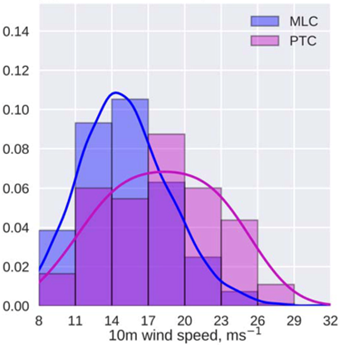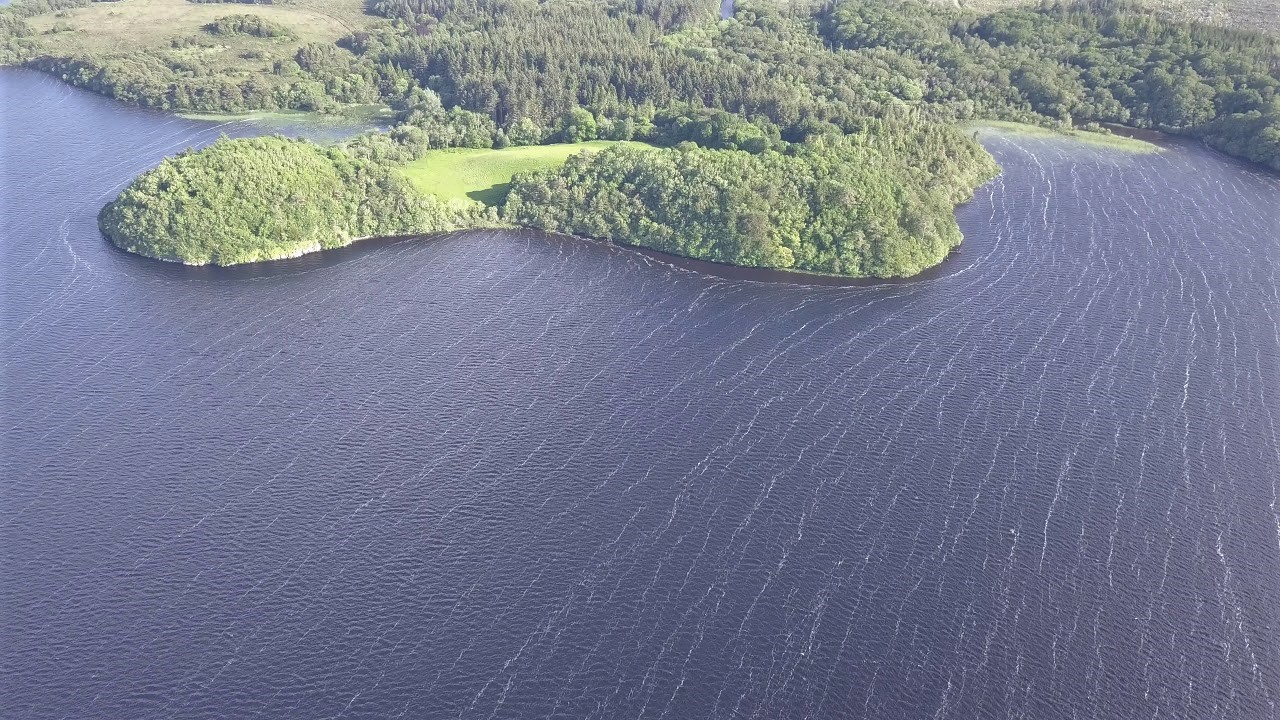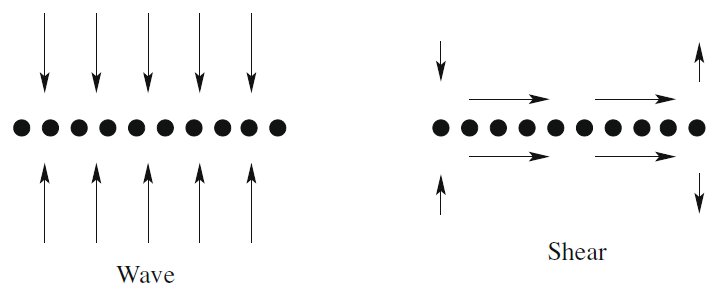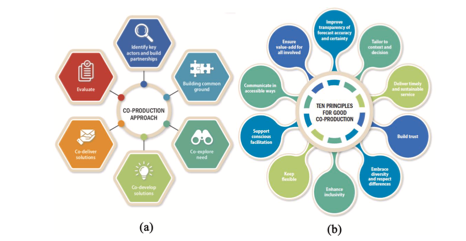By: Remi Tailleux
Below the mixed layer, shielded from direct interaction with the atmosphere, ocean fluid parcels are only slowly modified by turbulent mixing processes and become strongly constrained to move along density surfaces of some kind, called `isopycnal’ surfaces. Understanding how best to define and constrain such surfaces is central to the theoretical understanding of the circulation of the ocean and of its water masses and is therefore a key area of research. Because seawater is a complicated fluid with a strongly nonlinear equation of state, the definition of density surfaces has remained ambiguous and controversial. As a result, oceanographers have been using ad-hoc constructs for the past 80 years, none of which are fully satisfactory. Potential density referenced to some constant reference pressure has been one of most widely used of such ad-hoc density constructs. For instance, the variable σ2 denotes the potential density referenced to 2000 dbar. Physically, σ2 represents the density (minus 1000 kg/m3) that a parcel would have if displaced from its actual position to the reference pressure 2000 dbar while conserving its heat and salt content. σ0 and σ1 can be similarly defined for the reference pressure 0 dbar (surface) and 1000 dbar.
 Figure 1: Behaviour of different definitions of density surfaces for the 27 degrees West latitude/depth section in the North Atlantic Ocean defined to coincide at about 30 degrees North in the region close to the strait of Gibraltar. The background depicts the Turner angle, whose value indicates how temperature and salinity contribute to the local stratification. The figure illustrates how different definitions of density can be, which is particularly evident north of 40 degrees North. ρref defines the same surfaces as the variable γTanalytic defined in the text. Also shown are surfaces of constant potential temperature (red line) and constant salinity (grey line).
Figure 1: Behaviour of different definitions of density surfaces for the 27 degrees West latitude/depth section in the North Atlantic Ocean defined to coincide at about 30 degrees North in the region close to the strait of Gibraltar. The background depicts the Turner angle, whose value indicates how temperature and salinity contribute to the local stratification. The figure illustrates how different definitions of density can be, which is particularly evident north of 40 degrees North. ρref defines the same surfaces as the variable γTanalytic defined in the text. Also shown are surfaces of constant potential temperature (red line) and constant salinity (grey line).
Potential density, however, is usually assumed to be useful only for the range of pressures close to its reference pressure. As the range of pressures in the ocean varies from 0 dbar to about 11000 dbar (approximately 11,000 meters) in its deepest trenches, it follows that in practice, oceanographers had to resort to using different kind of potential density for different pressure ranges (called patched potential density or PPD). This is not satisfactory, however, because this introduces discontinuities as one moves from one pressure range to the next. To circumvent this difficulty, McDougall (1987) and Jackett and McDougall (1997) introduced a new variable, called empirical neutral density γn, as a continuous analogue of using patched potential density. However, while potential density is a mathematically explicit function that can be manipulated analytically, γn can only be computed by means of a complicated black-box piece of software that only works north of 60N latitude and for the open ocean thus excluding interior seas such as the Mediterranean. The neutral density algorithm works by defining a neutral density surface as made up of all the points that can be connected by a `neutral path’. Two points with pressures p1 and p2 are said to be connected by a neutral path if they have equal values of potential density referenced to the mid pressure (p1+p2)/2. Figure 1 illustrates that different definitions of density can lead to widely different surfaces and therefore how important it is to understand the nature of the problem!
The lack of mathematical expression defining γn, even in principle, has been problematic as it makes it very hard to develop any kind of theoretical analysis of the problem. Recently, we revisited the problem and proposed that γn should be regarded as the approximation of the so-called Lorenz reference density, denoted ρref . The latter is a special form of potential density, in the sense that it is referenced to a variable reference pressure that physically represents the pressure that a fluid parcel would have in a notional state of rest. This state of rest can be imagined to be the state that the ocean would eventually reach if one were to suddenly turn off the wind forcing, the surface fluxes of heat (due to the sun and exchanges with the atmosphere), and the freshwater fluxes (due to precipitation, evaporation, and river runoff). While this state of rest may sound to be something complicated to compute in practice, Saenz et al. (2015) has developed a clever and efficient way to do it. Figure 2 (a) illustrates an example of such a variable reference pressure field for the 30 degrees West latitude/depth section in the Atlantic Ocean. This shows that in most of the section, the variable reference pressure is close to the actual pressure, which means that over most of the section, fluid parcels are very close to their resting position. This is clearly not the case in the Southern Ocean, however, where reference pressures are in general much larger than their actual pressure. Physically, it means that all fluid parcels in the Southern Ocean `want’ to go near the bottom of the ocean. Tailleux (2016) used this reference pressure to construct a new analytical density variable called γTanalytic that can explain the behaviour of γn almost everywhere in the ocean, as illustrated in Figure 2(b). In contrast to γn, γTanalytic has an explicit mathematical expression that can be computed in all parts of the ocean. This is an important result, as it provides for the first time a clear and transparent definition of how to define ‘density surfaces’ in the ocean. Indeed, what this means is that the density surfaces thus defined are simply the density surfaces that would lie flat in a state of rest, which seems the most physically intuitive thing to do, even if this has not been considered before. In contrast, σ2 surfaces or any other definitions of density surfaces would still exhibit horizontal variations in a resting state, which does not seem right.
 Figure 2.: (a) Example of the new variable reference pressure for the latitude/depth section at 30 degrees West in the Atlantic Ocean. (b) Comparison of γn and our new density variable γTanalytic along the same section, demonstrating close agreement almost everywhere except in the Southern Ocean.
Figure 2.: (a) Example of the new variable reference pressure for the latitude/depth section at 30 degrees West in the Atlantic Ocean. (b) Comparison of γn and our new density variable γTanalytic along the same section, demonstrating close agreement almost everywhere except in the Southern Ocean.
An important application is that it now makes it easy to construct `spiciness’ variables, whose aim is to quantify the property of a fluid parcel of a given density to be either warm and salty (spicy) or cold and fresh (minty). To construct a spiciness variable, simply take any seawater variable (the simplest being salinity and potential temperature), and remove its isopycnal mean. Spiciness is the part of a variable that is advected nearly passively along isopycnal surfaces, where the term `passive’ means being carried by the velocity field without modifying the velocity field. The construction of spiciness variables allows for the study of ocean water masses, as was recently revisited by Tailleux (2021) and illustrated in Figure 3. The construction of γTanalytic opens many exciting new areas of research, as it promises the possibility of constructing more accurate models of the ocean circulation as will be reported in a future blog!
 Figure 3: Different constructions of spiciness using different seawater variables, obtained by removing the isopycnal mean and normalising by the standard deviation, here plotted along the longitude 30W latitude/depth section in the Atlantic Ocean. The blue water mass is called the Antarctic Intermediate Water (AAIW). The Red water mass is the signature of the warm and salty waters from the Mediterranean Sea. The light blue water mass in the Southern Ocean reaching to the bottom is the Antarctic Bottom Water (AABW). The pink water mass flowing in the rest of the Atlantic is the North Atlantic Bottom Water (NABW). The four different spiciness variables shown appear to be approximately independent of the seawater variable chosen to construct them. The variables τ and π used in the top panels are artificial seawater variables constructed to be orthogonal to density in some sense. S and θ and used in the lower panels are salinity and potential temperature.
Figure 3: Different constructions of spiciness using different seawater variables, obtained by removing the isopycnal mean and normalising by the standard deviation, here plotted along the longitude 30W latitude/depth section in the Atlantic Ocean. The blue water mass is called the Antarctic Intermediate Water (AAIW). The Red water mass is the signature of the warm and salty waters from the Mediterranean Sea. The light blue water mass in the Southern Ocean reaching to the bottom is the Antarctic Bottom Water (AABW). The pink water mass flowing in the rest of the Atlantic is the North Atlantic Bottom Water (NABW). The four different spiciness variables shown appear to be approximately independent of the seawater variable chosen to construct them. The variables τ and π used in the top panels are artificial seawater variables constructed to be orthogonal to density in some sense. S and θ and used in the lower panels are salinity and potential temperature.
References
Jackett, D.R., and T.J. McDougal, 1997: A neutral density variable for the world’s ocean. J. Phys. Oceanogr., 27, 237—263. DOI: https://doi.org/10.1175/1520-0485(1997)027%3C0237:ANDVFT%3E2.0.CO;2
McDougall, T.J., 1987: Neutral surfaces. J. Phys. Oceanogr., 17, 1950—1964. DOI: https://doi.org/10.1175/1520-0485(1987)017%3C1950:NS%3E2.0.CO;2
Saenz, J.A., R. Tailleux, E.D. Butler, G.O. Hughes, and K.I.C. Oliver, 2015: Estimating Lorenz’s reference state in an ocean with a nonlinear equation of state for seawater. J. Phys. Oceanogr., 45, 1242—1257. DOI: https://doi.org/10.1175/JPO-D-14-0105.1
Tailleux, R., 2016: Generalized patched potential density and thermodynamic neutral density: Two new physically based quasi-neutral density variables for ocean water masses analyses and circulation studies. J. Phys. Oceanogr., 46, 3571—3584. DOI: https://doi.org/10.1175/JPO-D-16-0072.1
Tailleux, R., 2021: Spiciness theory revisited, with new views on neutral density, orthogonality, and passiveness. Ocean Science, 17, 203—219. DOI: https://doi.org/10.5194/os-17-203-2021




















 Figure 1: (left) Antarctic sea ice extent maximum September 2021, (right) Minimum February 2022. Images from the
Figure 1: (left) Antarctic sea ice extent maximum September 2021, (right) Minimum February 2022. Images from the 